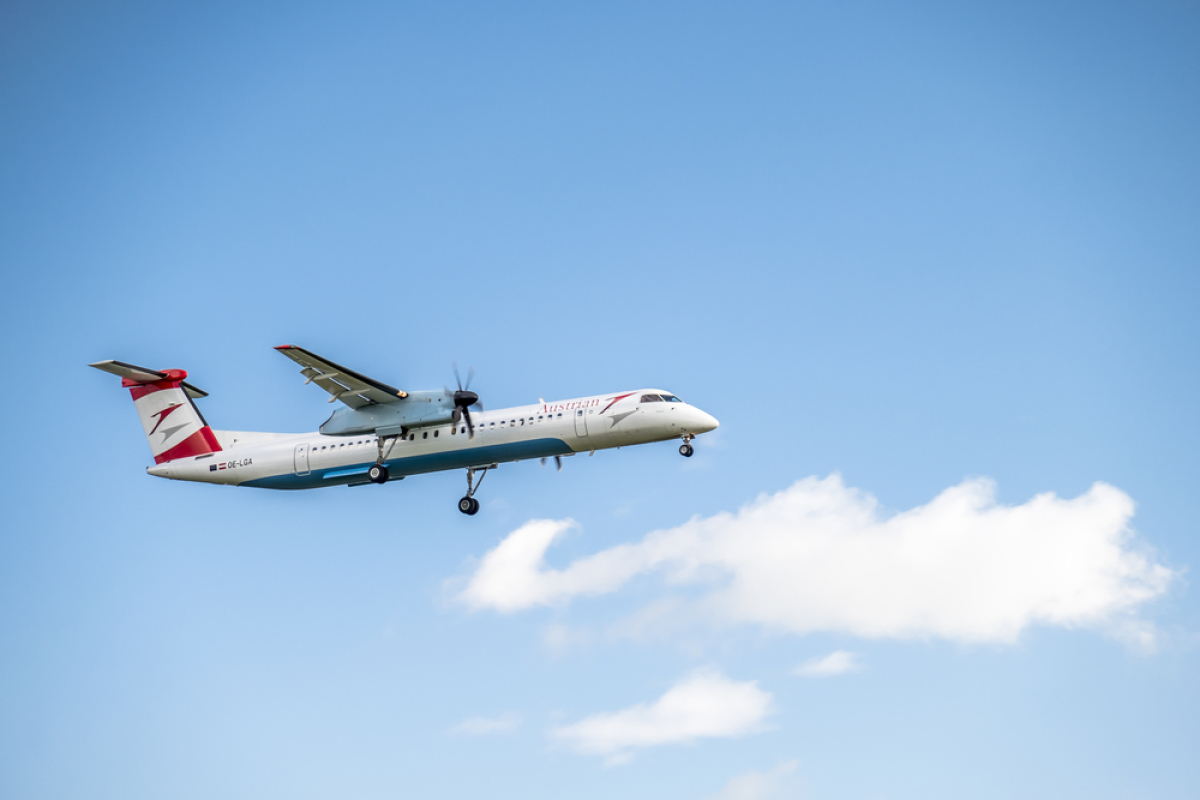It's a Small World After All
Domestic or International? That is the Question
MINDS ON
Can You See a Difference?
In Activity One, you were introduced to the terms domestic business and international business. So what exactly is the difference between a domestic and an international business?
What do these five businesses have in common?
- They all sell goods and services in exchange for currency.
- They all conduct research on their consumer markets to determine the needs and wants of their customers.
- They all have direct and indirect competitors.
- They all have to comply with government regulations and deal with economic conditions.
But while they have a lot in common, there are also a lot of differences between these businesses. They all have different levels of international involvement.
ACTION
International vs. Domestic: What’s the Difference?
Domestic businesses conduct their transactions within a country’s national borders, whereas international businesses conduct their transactions across country borders.
View the following the video which looks at the differences between international and domestic business.
Summarizing the Differences
Click on each of the images below to review the differences between international and domestic business:
differences
Canadian Tire - Profile of a Canadian Domestic Business
One of Canada’s most successful retail franchises got its start with the $1800 purchase of a small garage operation in the heart of Toronto. Brothers John William and Arthur Jackson Billes bought Hamilton Tire and Garage in 1922 at a time when the automotive market was expanding rapidly.

In 1927, they incorporated the business as the Canadian Tire Corporation, solidifying their expertise in tires. In this year, Canada had the third highest car ownership per capita in the world.
“
Strive to Always Make Things Better
~ A.J. Billes
The Billes brothers had a knack for pinpointing their consumers’ wants and needs and a strong understanding of marketing and customer relations. At a time when tire blowouts were common, they offered an unconditional guarantee on their tires. They focused on guaranteeing quality at the same time as undercutting the competition by offering lower prices. In 1928, they launched a mail order catalogue, which contained a road map and a list of prices for prospective customers; this innovation allowed them to connect with customers from across Ontario and the Maritimes. By 1937, their business had grown so much that they had to expand their warehouse space to a new location, at which the clerks famously retrieved orders while wearing roller skates in order to speed up their customer service.

The business focus of “do-it-yourself” served Canadian Tire well when the economy was hit with the Great Depression. As car sales dropped, people sought to find ways to increase the life of their vehicles. The Billes brothers grew their business further by the introduction of a system of associate dealerships. Dealers were allowed to establish and own their own Canadian Tire stores without having to pay a franchise fee, as long as they agreed to stock Canadian Tire-made and approved products. This system gave dealers considerable autonomy and provided a significant increase in profit for the Billes brothers. By 1940, there were over 100 Canadian Tire locations across Ontario and Eastern Canada. This dealer system is still a core foundation of the business today. Entrepreneurship is encouraged and dealers are given considerable control over their daily operations and incentives to serve customers with excellence.
In 1944, they took their stock public, seeking to expand their growth even further; 100,000 shares of stock were sold for $10 each. They also launched an employee profit sharing plan which was designed to promote loyalty and discourage unionization.

Canadian Tire sought to take advantage of the growing trend towards camping and outdoor products; between 1940 and 1960, visits to national parks increased from 500,000 to 5 million. With the growth in urban development, backyard activities like BBQing became popular as well. In 1957, the company introduced its first French language catalogue, which increased their geographic market. In 1958, they added yet another element to their business - gas bars at many of their locations. In order to compete with other gas stations, they designed Canadian Tire money that offered in-store rebates to customers that purchased gasoline. The British North American Bank Note Company was later commissioned to print this “money” giving it considerable marketing appeal.
by Fred Lum/The Globe and Mail
When Joseph Dean Muncaster was chosen to succeed A.J. Billes as President of Canadian Tire, it marked a major turning point for the company. Muncaster, whose father was the owner of a successful Sudbury Canadian Tire location, and who was part of a new generation of managers holding MBA degrees, took over as President in 1966. Muncaster expanded the company further west. He grew the company’s warehouse and shipping capacity, which allowed them to develop new product divisions. He also bought one of the first IBM computer systems in Canada, which helped to organize the new managerial structure that he had introduced. He set high expectations for product turnover and fired those dealers that underperformed. Concerns about the company’s rapid expansion were raised in the 1970s, when inflation and unemployment rates were high, and the company posted its first year with no profit in 1977.

Canadian Tire had several unsuccessful attempts at international expansion. Muncaster first introduced the idea of expanding to Australia, and this was strongly opposed by AJ Billes who believed that the country was too unionized. When Muncaster initiated the purchase of the Texas retail chain White, the company lost over $300 million and was faced with a $400 million lawsuit at the hands of the 19 dealers who had not managed to turn a profit by moving south of the border. Canadian Tire sold the entire division and ousted Muncaster from the role of President, replacing him with Dean Groussman, the company’s first American president. Another attempt at expanding into the U.S. in the1990s failed as well. Several auto parts and service centres were opened in the Indianapolis area and Canadian Tire lost millions on them, $15 million in 1992 alone. The mounting pressure of new competition from retail giants Walmart and Home Depot, combined with a weak gasoline market, forced Canadian Tire to pull out of the U.S. market altogether in 1995.
See more about Canadian Tire’s failed US expansion in the CBC video below:
The appearance of American big-box retailers in Canada in the 1990s prompted Canadian Tire to revamp its image. New President Stephen Bachand adopted a new retail strategy in 1992, which refocused the company on the store’s traditional core products - automotive accessories, hardware and sporting goods. He increased the size of many outlets in order to compete with the likes of Walmart and Home Depot in terms of product depth and selection. A key competitive advantage of the company is highlighted on their website today - more than 90% of the population lives within a 15 minute drive of a Canadian Tire location.

Canadian Tire has since launched a number of initiatives in order to remain competitive. In 2001, it merged with Mark’s Work Wearhouse, diversifying its product position. In 2003, they expanded their financial services by opening the Canadian Tire Bank, designed primarily to market a credit card linked to Canadian Tire money. In 2011, in an effort to capture more of the youth market, it merged with the Forzani Group, which includes Sport Check, Hockey Experts, Sports Experts, National Sport, Intersports, Pro Hockey Life, and Atmosphere. Canadian Tire also has strong divisions in the form of their PartSource and Gas+ locations, and CT REIT, which deals with real estate investments. In addition, they are currently focusing on revamping their online shopping capacity. Today, Canadian Tire has nearly 1700 retail and gas outlets and employs approximately 85,000 people across Canada. It has a presence in every province and territory except Nunavut. According to their website, Canadian Tire “provides Canadians with products for life across its Living, Playing, Fixing, Automotive and Seasonal categories.”
In an age when many large companies are downsizing in an effort to cut costs and retain profits, Canadian Tire has remained steadfast. Instead, they are looking for ways to capitalize on new opportunities and reduce costs in order to maintain and increase their profit margins. “Management are committed to being leading-edge retailers in a world that our founders could never have imagined.” (Maureen Sabia, Chairman, Canadian Tire, 2012) They have opened smaller-scale “express” stores in urban centres to allow them to capitalize on consumers’ need for convenience; these stores carry many of their familiar brands but in smaller quantities than the big box stores. With the weak state of the Canadian dollar, they have been looking at selectively raising prices, primarily in the sporting goods and apparel divisions. They are consolidating purchases from top suppliers in order to obtain better rates. And they have outsourced their transportation (to Canada Cartage) in order to ensure delivery of enough product to stores during peak seasons (spring - beginning of gardening season and prime time for household maintenance and repair; fall - clean-up/winterizing; and Christmas) without creating an inefficient and costly supply model.
In 2016, Canadian Tire launched its “Facebook at Work” initiative. This is a business version of Facebook designed to allow the large workforce to share ideas and collaborate across the entire company. Chris Main, VP of Digital Technology at the FGL division of Canadian Tire, says that their cross-Canada communications team has eliminated “around 780 meeting hours a year by collaborating real time in a workplace group instead of a weekly meeting.” The system has served to conduct more effective pre-market research, speed up customer service response time, and has unified the company in a way that just wasn’t possible before.
Perhaps most impressive has been Canadian Tire’s commitment to employee engagement and community involvement. They know that employee engagement is critical to remaining competitive in the current retail climate. Employees have been featured on posters, celebrating their contributions at work, and their roles in improving the lives of Canadians. And one need only look to Canadian Tire’s successful JumpStart division to see the impact of their community presence.
“
At the core of their engagement strategy lies the bond of national pride, which is a unique competitive advantage that many global enterprises don’t have. Canadian Tire has leverage and they know it - they’ve grown their employer brand into one that inspires employees to work efficiently with a strong customer focus.
~ PostBeyond, 2015
Today, Canadian Tire is making an ambitious push to forge ahead in the world of digital and mobile-savvy retailing. “The innovation journey is core to the strength of our brand,” says Duncan Fulton, Canadian Tire’s senior-president of corporate affairs.
For more information related to Canadian Tire, you can read through the following resources:
Bombardier - Profile of a Canadian International Business
Today, Bombardier is one of the world’s largest manufacturers of trains and airplanes, but the name was once synonymous with a different type of vehicle. The company was founded by Joseph-Armand Bombardier, a Quebecois mechanical engineer who had begun developing car-based snowmobile designs at the age of 15 in his hometown of Valcourt, Quebec. This area drew a lot of snowfall, and in the 1920s, roads were not regularly cleared. Bombardier’s motivation to create a vehicle for snow-based travel was further increased when his son died in 1934 from a burst appendix, because of being unable to reach a hospital.
By 1935, Bombardier had created the foundation for the 7 person auto-neige. The first customers were clergy, postmen, military and travelling doctors. The company was incorporated in 1942 and subsequently underwent a number of changes that established its dominance in the field. The initiation of a rural road clearing program in Quebec in 1949 reduced demand for Bombardier’s snowmobiles and prompted them to diversity into other product areas. The first was the creation of an all-terrain vehicle that could be used at isolated work sites in the forestry, mining, and oil industries. Bomardier also refined his technology to create smaller one and two-passenger recreational vehicles that he called Ski-Doos. Sales of this popular product increased from 225 in 1959 to over 8,000 in 1964, and the Valcourt factory was expanded. They continued to invest in the development and marketing of Ski-Doos, and purchased a subsidiary to take over the rapidly growing production.

After Bombardier’s death, the company’s Presidency fell to his son Germain, and later his son-in-law Laurent Beaudoin, who held the position until 2008. Beaudoin played a key role in expanding and diversifying the company. He first moved the company into the production of locomotives with the purchase of Montreal Locomotive Works in 1975, a purchase that was made possible because of the Quebec government’s financial assistance; this set the precedence for Bombardier’s reliance on state funding. Government assistance and alliances with other companies having experience and expertise in related fields have been integral in fuelling Bombardier’s growth, and continue to play an important role in Bombardier’s operations today.
“
We look far ahead to see and shape the future of mobility. Our goal is to continuously find better ways to bridge distances and bring people together. Across cities, countries, and the globe. This is our passion.
~ Bombardier, Inc.

Bombardier was not without its share of difficulties during this period of rapid expansion. A spike in oil prices and a lack of snowfall led to a sharp decline in Ski-Doo sales. Labour protests over limited wage increases during a time of heavy inflation caused delays in production and Bombardier was only able to partially fulfil an order for cars in time for the 1976 Olympics. Labour disputes also led to the closing the Montreal Locomotives plant in 1980, and Bombardier lost a major bid for the purchase of VIA Rail.
However, orders for public light and railway cars from many North American cities continued to come in. Bombardier won a bid to produce 825 subway cars for the New York Metro Transit Authority. Valued at over $1 billion, this represented the largest single export sale by a Canadian manufacturer to date. The trade was financially supported by the Canadian government and relied on a partnership with another company with expertise in the transportation industry - Kawaski Heavy Industries. This successful contract led to other major orders, including cars for Vancouver’s SkyTrain, and encouraged Bombardier to expand its public transport capacity. Europe was identified as a key market, given the importance of mass transit for most European countries. Bombardier began purchasing European rail companies, establishing itself as one of the three largest train manufacturers in the world.
In 1986, Prime Minister Brian Mulroney’s government decided to privatize the federally owned aerospace firm Canadair, which owned and developed Canada’s Challenger jets. Bombardier won the bid over a Winnipeg-based subsidiary of Bristol Aerospace. With access to this new expertise, Bombardier went on to secure contracts for the maintenance of Canada’s CF-18 fighter jets. This was followed by the purchase of the Northern Ireland aerospace company Shorts, which was previously owned by the U.K. government under Margaret Thatcher.
Bombardier next expanded into the private jet market with the purchase of Kansas-based Learjet and Boeing’s de Havilland Canada. In each case, they kept much of the company intact so as to take advantage of the existing expertise, and made only minor changes to the management. By 1997, Bombardier owned about 50% of the global regional jet market.
This significant expansion prompted Bombardier to restructure itself into five major operating divisions - aerospace, rail transportation, recreational products, international markets, and financial services - each one with its own president and chief operating officer. Because of financial difficulties, the company pulled out of the financial services division, and sold the recreational products division to the Bombardier and Beaudoin families, in order to focus primarily on aerospace and transportation.
In recent years, Bombardier has manufactured for British rail operators, Delta and Air Canada, Ontario’s Metrolinx, and the Toronto Transit Commission.
In 2013, Bombardier made the list of Universum Global’s World’s Most Attractive Employers, as the only Canadian company on the list. The ranking is reflective of Bomardier’s association with attributes such as market success, professional training and development, and the provision of secure employment.
The company continues to struggle with cost containment and deadlines. They are currently facing a looming deadline of 2019 for the production of 204 TTC streetcars, 70 of them by the end of this year. They have extended their workweek from five to seven days, have added additional resources to all sites, and is using air rather than marine transportation to retrieve the streetcars from Vienna in a desperate attempt to fulfill their promises (Toronto Star, 2016). They have outsourced much of their production to facilities in Mexico and China, and continue to implement widespread layoffs and elimination of jobs both in Canada and worldwide. Ian Lee, a professor at Carleton University’s Sprott School of Business, says Bombardier’s decision to outsource jobs is a result of Canada’s high unit-labour costs. Canada has the fourth highest in the world, according to the Organization for Economic Cooperation and Development. Lee says protectionist policies at all levels of government have made Canadian companies in the airline, aerospace, automobile, and telecom industries less competitive. (Global News, 2016)
“
You can pay high wages, but you have to have really, really high productivity. We are just not competitive.
~ Ian Lee
In 2017, they signed a deal with IBM in an effort to reduce costs and improve information technology operations in the rail and aerospace industries. The six-year agreement covers their operations in 47 countries worldwide. Sean Terriah, chief information officer for Bombardier, says “Bombardier is working to improve productivity, reduce costs, and grow earnings.” (Financial Post, May 17, 2017)
Bombardier has faced considerable controversy over its recent government bailout amidst the layoffs of nearly 15,000 employees and a $32 billion boost to executive salaries. Justin Trudeau has defended the federal government’s continued support of the company, saying that we need to support Bombardier’s continued innovation in this industry. Take a look at the commentary on the issue in the video below:
For more information about Bombardier, read through the following resources:
 International vs Domestic: A Comparison Activity
International vs Domestic: A Comparison Activity
“
A Venn Diagram uses overlapping circles or other shapes to illustrate the logical relationships between two or more sets of items. Often, they serve to graphically organize things, highlighting how the items are similar and different.
Use a Venn Diagram to compare Bombardier and Canadian Tire. Incorporate key international business terminology in your analysis and comparison of the two companies.
You can download and complete this Venn Diagram template, or you can use online software such as gliffy or creately.
Types of International Business
International Business is all the activities needed to get a product to consumers in an international market. There are four main ways that a company can expand internationally:
Importing and Exporting
This is most common and the largest form of international business activity. It is the easiest way to enter a new market with a minimal investment of capital. Exporting means that a company makes a product domestically and sells it another country. Importing means that a company brings goods and services into the country from abroad.
Volkswagen manufactures cars and exports them to countries all around the world.

Grocery retailers import international products and sell them in local stores.

Licensing
In this type of arrangement, a company allows another company to use its brand name, technology, patent, copyright, trademark, or other assets, in exchange for a dollar amount based on sales, called a royalty. This is a good option when domestic production costs or transportation costs are high, or when government regulations in the other country place stringent restrictions on other forms of international business. Canadian Tire employed this method when it expanded its business both domestically and internationally.
Starbucks sells its same quality products all over the world in look-a-like stores through licensing contracts.
Strategic Alliance and Joint Venture
This is a cooperative agreement between two or more companies for mutual gain. If the partners mutually form a new company together, it is called a joint venture. This is a good way for companies to share costs, technologies, and sales networks.
Many bricks-and-mortar bookstores have folded due a lack of customer base. A strategic alliance between Chapters and Starbucks has proven beneficial for both companies. Starbucks has similar arrangements with bookstores in other countries as well.
Foreign Direct Investment
When a company builds a branch plant in another country, or purchases a foreign firm or subsidiary, it is called direct investment. This gives a company excellent access to a foreign market, and allows it to act as a domestic business in that market, often with complete access to manufacturing and selling activities. The host country also benefits by being exposed to new products, technology, and managerial skills. Bombardier has traditionally used this method to expand its business.
General Motors has invested billions of dollars in China to build factories to produce cars for the American market. They also contribute funds to local universities in China to develop new technologies.
CONSOLIDATION
Taking the Leap
According to a 2014 Financial Post article, “Why Canadian Firms that Stay Domestic are Only Hurting Themselves,” only 3.6% of Canadians firms export. Compare this to the fact that 20% of companies in the United Kingdom export, and that statistic is pretty staggering. Why do Canadian companies tend to remain on the domestic end of the spectrum? If they think they’re playing it safe in an ever-changing global market, they need to change their thinking.
The article stated that “exporting helps firms diversify and improve their resilience to business cycle fluctuations, resulting in lower sales volatility, and a lower rate of market failure.” Canadian companies that adopt more of a risk-taking attitude will be more likely to invest in innovation through research and development.
You can read the full article at the Financial Post.
Here are some of the advantages to investing internationally:
- Expanded markets and increased sales mean increased profits.
- Going global allows a company to minimize its costs by taking advantage of lower labour prices.
- Global markets provide easy access to more resources and in many cases decreased regulations.
- Entering new markets allows a company to diversify its product lines. This protects a company’s investments in the event of economic difficulties in certain markets.
- A company may act to protect itself from its competition, or to gain advantage over its competitors.
 Business Consulting
Business Consulting
Both Bombardier and Canadian Tire attempted to expand internationally, but only Bombardier was ultimately successful in doing so.
Based on the content of this activity, and the critical thinking you did within the Venn Diagram task, form an opinion on the choices made by these companies. Put yourself in the position of business consultant, and choose to make a recommendation to EITHER Bombardier OR Canadian Tire as to what their next step should be.
Outline your response in the following format:
- Strengths (what they have done well);
- Weaknesses (what they could do better);
- Next Steps (how can they take advantage of opportunities in the market to continue their growth?).